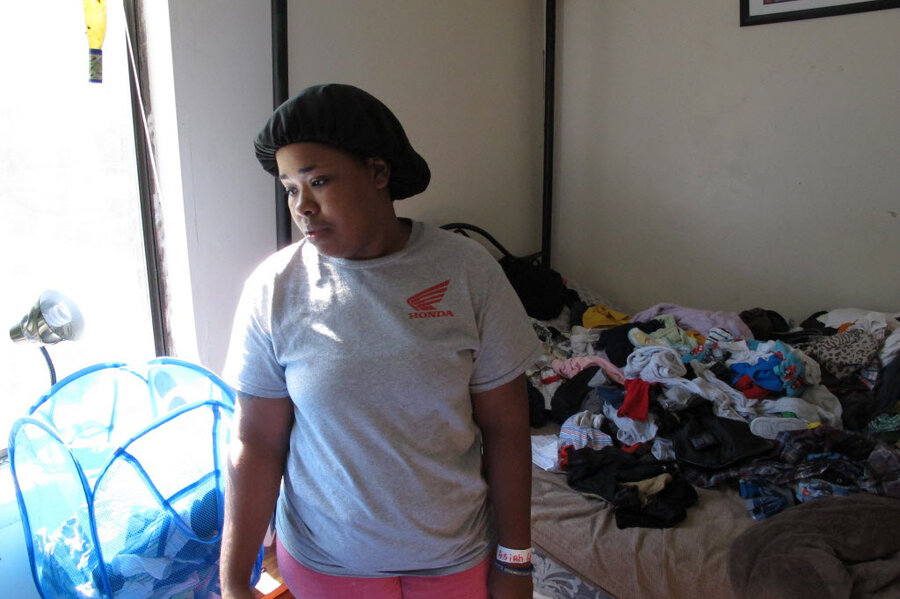South Carolina residents return home as the state takes stock of its losses
Loading...
As floodwaters recede across South Carolina, residents are returning home to the reality of all the “1,000 year” storm washed away.
"Everything is gone!" Wendy Dixon said tearfully as she and husband assessed damage to their apartment in Columbia. "My clothes and all can be replaced. But my little things, my pictures, are all gone."
Dixon told the Associated Press that floodwaters had claimed her wedding album and dozens of photos of her two sons and three grandchildren. Having just moved in June, she and her husband, Mike, hadn't yet had the chance to unpack the photos and waters easily soaked their boxes on the floor.
The couple has been staying at a shelter at a Columbia middle school.
"We'll be fine. We'll go somewhere," Mike Dixon told AP. "But she doesn't see that now."
Many South Carolina residents have virtually nothing left after flood waters swept through their homes. At least 19 people in South Carolina and North Carolina died in the storm.
US Sen. Lindsey Graham (R) estimated the cleanup may cost $1 billion, even as the spectre of more flooding looms through the weekend.
The University of South Carolina, which remains closed, moved its home football game against Louisiana State University some 700 miles away to Baton Rouge, La., citing weak infrastructure unable to support the 80,000 fans expected at the stadium.
South Carolina's Agricultural Commissioner Hugh Weathers estimates the state may have lost more than $300 million in crops in recent flooding, and warned that number is conservative and may rise.
Mr. Weathers told AP he and state and federal agriculture officials surveyed damaged fields from the air several times this week and found that rivers and creeks had flooded low-lying farmlands. He says that severely damaged crops include peanuts, cotton, fall vegetables, soybeans, and some timber.
This year had already been a challenging year for South Carolina farmers, Weathers said. The excessive flooding proved a bitterly ironic end to an exceptionally dry growing season.
In Sommerton, S.C., Mayor Mac Bagnal said he's trying to find somewhere for stranded evacuees to go who may not have friends or relatives nearby to take them in. Many have been staying at Scott's Branch High School and will need another place to stay when classes resume on Monday.
Several school districts in the Columbia area are opening up some of their cafeterias to serve free meals to kids off school this week due to flooding.
Several Richland School District cafeterias are offering breakfast and lunch to area children on Thursday and Friday. District officials say they'll also have employees on hand to talk to families affected by the flooding.
The Federal Emergency Management Agency said late Wednesday it had amended the disaster declaration to make survivors in Calhoun, Darlington, Florence, Kershaw, and Lee counties eligible for its individual assistance program.
President Obama had already signed a disaster declaration Monday following nearly 2 feet of rain in central South Carolina, making federal aid available for recovery efforts in the state. The initial action made federal funding available to people in eight counties. Three others were added earlier Wednesday.
In Columbia, residents are advised to boil their water for a minute before cooking or drinking, while city officials activate a backup plan to protect the city's main water source after a portion of the Columbia canal collapsed. Area schools and city offices will be closed through Friday.
The Columbia Canal, built more than two centuries ago, serves 375,000 customers, and provides up to 35 million gallons a day to the city's water plant. Last week's rainfall caused a breach in the canal downstream from the water plant, bringing the canal's water level to dangerously low levels.
The city plans to install pumps to divert water from the canal and the nearby Broad River to the reservoir that feeds the water plant. Mayor Steve Benjamin said the pumps were already in place and expressed confidence that officials will work hard to make sure the city doesn't run out of water.
This report contains material from the Associated Press.






